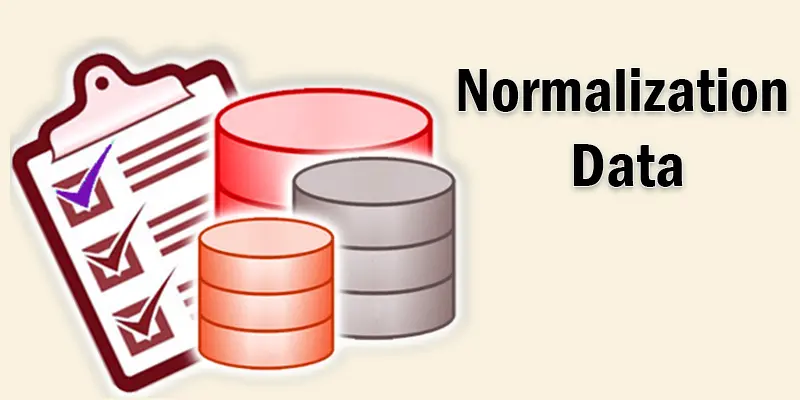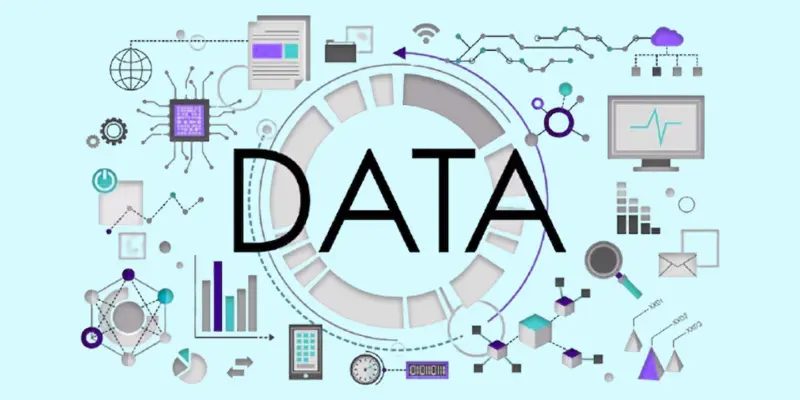What is Normalization? Importance, Types, When to Use, Challenges & Tips
Published: 13 May 2025
Normalization Data
Normalization in data helps organize information efficiently by reducing redundancy and improving consistency. But have you ever wondered why some databases become slow and messy over time? Many users struggle with duplicate entries, inconsistent records, and sluggish queries, making data management a headache. Imagine trying to find a customer’s details in a cluttered database—it’s frustrating! That’s where normalization comes in, ensuring data remains structured, accurate, and easy to manage.
What is Normalization
Normalization is a process used in databases to organize data efficiently. It removes duplicate data, reduces redundancy, and ensures consistency. The main purpose of normalization is to structure data in a way that makes it easier to store, retrieve, and update without errors.
The concept of normalization was introduced by Edgar F. Codd in the 1970s as part of his work on relational databases. It is best suited for businesses, developers, and data analysts who need clean and organized data for applications, reports, and decision-making.
Example
Imagine a student database where student names, courses, and phone numbers are stored in one table. If a student enrolls in multiple courses, their name and phone number are repeated multiple times. This wastes space and can cause errors. Normalization separates this data into different tables—one for students, one for courses, and one linking both—eliminating redundancy and ensuring accuracy.

Why is Normalization Important?
Normalization is vital because it helps keep data structured, accurate, and efficient. Without it, databases can become messy, slow, and difficult to manage.
Eliminates Duplicate Data
- Prevents storing the same information multiple times.
- Saves storage space and avoids unnecessary data repetition.
- Example: Instead of storing a customer’s details in every order, normalization links orders to a single customer record.
Improves Data Consistency
- Ensures that updates happen in one place instead of multiple records.
- Reduces errors caused by inconsistent data entries.
- Example: If a student’s phone number changes, updating it in one table updates all linked records.
Makes Searching Faster and Efficient
- Reduces the time needed to find and retrieve data.
- Speeds up queries by organizing data properly.
- Example: A normalized e-commerce database can quickly find all orders of a specific customer without scanning unnecessary data.
Ensures Data Integrity
- Maintains accuracy by enforcing relationships between tables.
- Prevents orphan or incorrect data entries.
- Example: A database won’t allow an order entry if the customer ID doesn’t exist.
Saves Storage Space
- Avoids storing repeated values, reducing database size.
- Makes databases easier to maintain.
Types of Normalization Forms (With Examples)
Normalization has different levels called normal forms (NF) that help organize data efficiently. Each level improves database structure by removing redundancy and ensuring consistency.
First Normal Form (1NF) – Removing Duplicate Values
- Each column has only a single value (no multiple entries in one field).
- Each row is unique and has a primary key.
Example
Imagine a student database where a single field contains multiple courses for one student. This is incorrect. Instead, each course should be stored in a separate row to follow 1NF.
Eliminating Partial Dependencies in the Second Normal Form (2NF)
- When a database follows 1NF, it is in 2NF.
- Every non-key column depends entirely on the primary key.
Example
In a sales database, if product details like price and name are stored in an order table along with customer details, it creates partial dependencies. The product’s price does not depend on the order ID but rather on the product itself. To fix this, product details should be placed in a separate table.
The Third Normal Form Eliminates Transitive Dependencies (3NF)
- When a database follows 2NF, it is in 3NF.
- There are no indirect (transitive) dependencies, meaning non-key columns must depend only on the primary key.
Example
If an employee database contains employee ID, department name, and manager name in the same table, the manager’s name depends on the department rather than the employee. The right approach is to store department details in a separate table and link them using department IDs.
Advanced 3NF in Boyce-Codd Normal Form (BCNF)
- When a database adheres to 3NF, it is in BCNF.
- Each determinant—a column that determines the value of another column—is a potential key.
Example
In a university database, if multiple professors teach a course, but each professor also has a unique office, storing everything in one table creates issues. The best approach is to separate professor-course relationships into a new table.
When to Normalize and When Not To
When to Normalize
- For data consistency – Prevents duplicate and inconsistent data.
- To save storage space – Eliminates redundancy and reduces database size.
- For easier updates – Changes apply in one place instead of multiple records.
- For frequently changing data – Ensures efficient modifications and deletions.
- When using relational databases – Works well with MySQL, PostgreSQL, and SQL Server.
When Not to Normalize
- For faster read queries – Too many table joins slow down performance.
- When data is read-heavy – Reports and dashboards may work better with pre-joined tables.
- For small databases – Redundancy isn’t a big issue for small-scale applications.
- When real-time performance matters – Apps like gaming leaderboards need quick access.
- When using NoSQL databases – MongoDB and Firebase favor denormalized structures.

Common Challenges in Normalization
Normalization improves database efficiency, but it also comes with some challenges.
Complex Queries and Joins
- Data is split into multiple tables, requiring more joins to fetch related information.
- This can slow down query performance, especially for large datasets.
Increased Query Execution Time
- Normalized databases need multiple queries to retrieve complete data.
- Example: Fetching customer details along with order history may involve joining three or more tables.
Higher Processing Overhead
- Breaking data into smaller tables means more relationships to manage.
- Indexing and constraints can increase system load.
Difficult Data Management for Beginners
- New database users may struggle with complex relationships.
- Understanding foreign keys, dependencies, and normalization rules requires experience.
Performance Issues in Read-Heavy Applications
- Applications that prioritize fast reads (like reporting tools) may slow down due to excessive joins.
- Example: Data analytics dashboards may work better with pre-aggregated data.
Over-Normalization
- Too much normalization breaks data into too many small tables, making management harder.
- Example: Splitting an employee database into separate tables for names, addresses, phone numbers, and departments may become unnecessary.
Not Suitable for All Database Types
- NoSQL databases (like MongoDB, Firebase) prefer denormalized structures for faster access.
- Some applications need pre-joined data for better speed.
Tips for Effective Normalization
- Understand data relationships – Identify how tables connect before normalizing.
- Follow normalization rules step by step – Apply 1NF, 2NF, 3NF, and BCNF as needed.
- Avoid over-normalization – Don’t split tables too much, or queries will slow down.
- Use indexing wisely – Speeds up joins and searches in a normalized database.
- Balance between normalization and performance – Normalize only where needed.
- Denormalize when necessary – For read-heavy applications, consider pre-joined tables.
- Optimize queries – Use efficient joins, indexing, and caching to improve speed.
- Test database performance – Regularly monitor query execution times.
- Keep documentation – Track table relationships for better maintenance.

Conclusion About Data Normalization
Normalization is the key to efficient, organized, and error-free databases. It helps maintain consistency, reduces redundancy, and improves data integrity. While it comes with challenges, mastering normalization can make database management smarter and more effective.Understanding normalization will help you build better, faster, and more reliable databases. Dive deeper, experiment with real-world examples, and unlock the true power of structured data!
FAQS How Normalize Data
Normalizing data removes duplicate entries, organizes it into logical tables, and improves database efficiency. It also helps in data analysis and machine learning by bringing values into a standard scale. This makes calculations and comparisons more accurate.
In Min-Max normalization, values are rescaled between 0 and 1.Z-score normalization transforms data into having a mean of 0 and a standard deviation of 1.The technique employed determines the rescaled range.
Normalization doesn’t involve direct calculation but follows a set of rules to remove redundancy and organize data efficiently. You analyze the database structure, identify repeated data, and apply normalization forms (1NF, 2NF, 3NF, etc.). This process ensures data is stored in the best possible way.
The first rule (1NF) states that a table should have only atomic (indivisible) values in each column.This implies that a single cell cannot contain multiple values or recurring groupings. To maintain data organization, each row should have a primary key, which is a unique identifier.
Use normalization when you need data consistency, better storage management, and easier updates. It’s ideal for relational databases where reducing redundancy and improving accuracy are essential. However, in cases where fast retrieval is more important than data integrity, denormalization might be a better choice.

- Be Respectful
- Stay Relevant
- Stay Positive
- True Feedback
- Encourage Discussion
- Avoid Spamming
- No Fake News
- Don't Copy-Paste
- No Personal Attacks

- Be Respectful
- Stay Relevant
- Stay Positive
- True Feedback
- Encourage Discussion
- Avoid Spamming
- No Fake News
- Don't Copy-Paste
- No Personal Attacks





